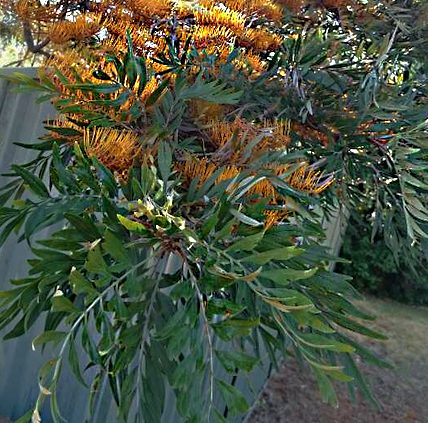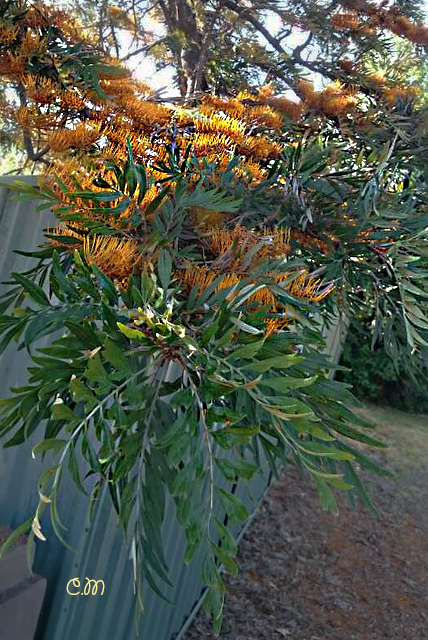
Grevillea robusta Silky Oak Tree for Large Areas
Growing Grevillea Robusta Or Silky Oak All You Want To Know
 Grevillea robusta, the largest of the grevilleas commonly known as the silky oak tree, or Australian silver oak. It is a popular evergreen tree which grows to a height of 20 to 100 ft. This tree is not related to true oaks and belongs to the Proteaceae family. This fast-growing tree is native to the east coast of Australia and prefers dry, wet or subtropical rainforest environment and can live for 100 years.
Grevillea robusta, the largest of the grevilleas commonly known as the silky oak tree, or Australian silver oak. It is a popular evergreen tree which grows to a height of 20 to 100 ft. This tree is not related to true oaks and belongs to the Proteaceae family. This fast-growing tree is native to the east coast of Australia and prefers dry, wet or subtropical rainforest environment and can live for 100 years.
What does a Silky Oak Tree look like?
When young, from a distance this plant has a pyramidal shape and develops horizontal branches later on. The mature tree produces a beautiful display of flowers. The flower base is deep red with deep golden yellow stamen flowers shown as 2 inch spikes during spring and summer. The fruits are pod-like and boat-shaped while the leaves are fern-like and are olive green on the top side and have a silver tinge on the underside. The outer bark is dark grey in colour and I notice the tree kinda sheds foliage at anytime more so before flowering. These tall trees are grown for timber and for wind protection and attracts birds, butterflies, bees, along with other insects.
Growing Conditions
This tree is frost hardy when fully grown and can withstand temperatures as low as -8 C. When young, the plant can be used indoors as it tolerates shade. If young plants are planted outside, they require protection from the cold during their first frosty conditions. This ornamental tree requires a sunny location and slightly acidic as well as well-drained soil. They can survive in sandy, loamy, clay or in poor soil. For the silky oak to live a healthy life its soils needs to be between pH range of 4.5 and 8 but hates limey soil. When well established, these plants are drought resistant. The watering requirement is very minimal for this plant. When planted near bushlands, the silver oak can be invasive. This tree is an ideal option for Xeriscape gardens and Mediterranean themed garden. It is appropriate for my climate this tree is seen planted in parks or as a street tree and can be seen from great distances when the tree is in full bloom in my area.
When Does the Silky Oak Tree Start and Finish Flowering
In normal conditions, the Silky Oak tree starts flowering when it is six years old. The flowering usually occurs from October to November in natural habitats. The flowering becomes sporadic when planted in equatorial conditions.
Propagation
The Silky oak can be propagated by different methods such as using seeds, graft, or hardwood cuttings. Seed germination is a time taking process, even though the seeds are not dormant.
Growing Silky Oak from Seed
- Soaking the seeds for 24 hours in cold water before sowing this increases the chances of germination.
- Sow the soaked seeds in well-draining seedbeds placed in shady areas or in containers. The germination occurs within 2 to 4 weeks.
- After germination, transplant the sapling after 7 days to the preferred site. Provide shade for the sapling for 2-3 weeks after transplantation.
- If using the hardwood cuttings for propagation, take 5 to 8cm of the stem with a heel from half-ripe wood.
Silky Oak Tree Uses
The tree has edible, fuel and agroforestry uses.
- The flowers are a good source of nectar for nectar loving birds.
- The plant yields gum resin and rutin while the dyes are obtained from leaves and are used for colouring silk.
- The tree is widely used for reforestation and planted along side crops to provide them with shade.
- It can be intercropped – grown with food plant crops of different types like tomato, banana, coffee, and tea.
- The wood obtained is used for panelling, joinery, and cabinetry.
Wood is a good source of charcoal. It is highly suitable for apiculture as the brightly coloured and nectar containing flowers attract bees.

























